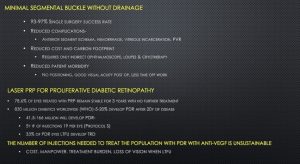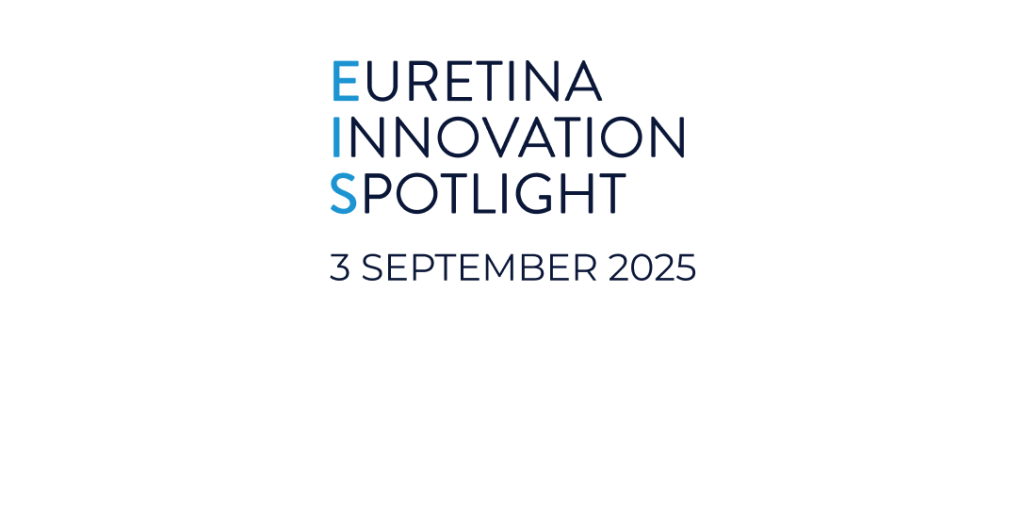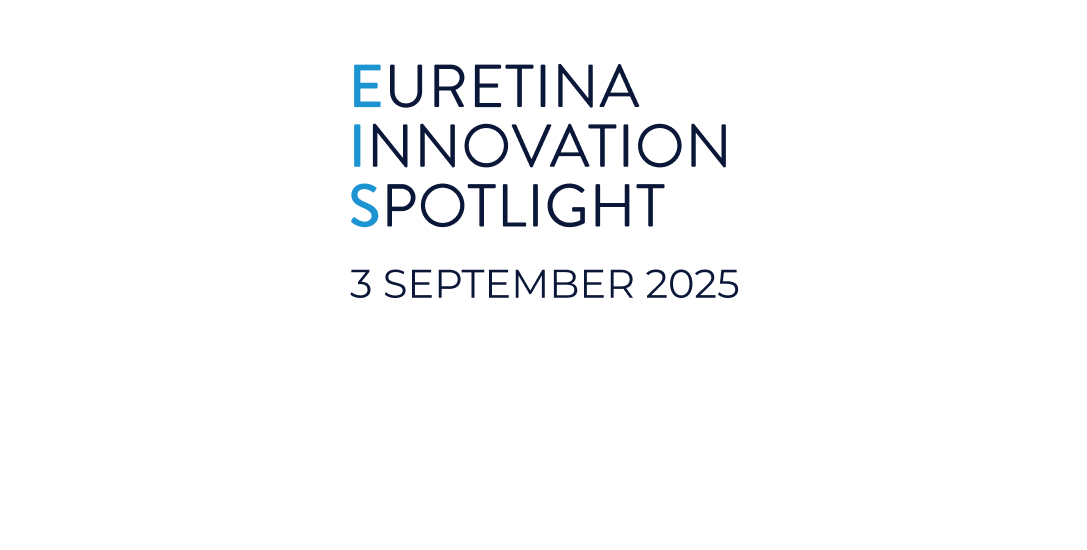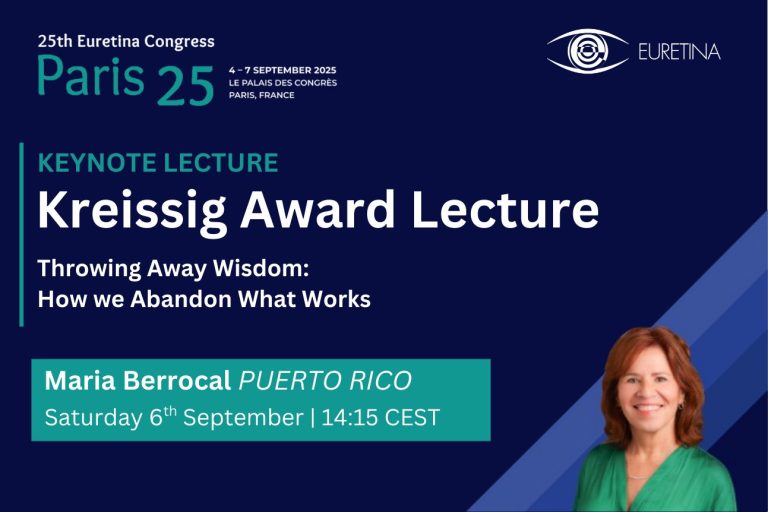Kreissig Award lecturer will discuss management options for retinal detachment and proliferative and severe nonproliferative diabetic retinopathy to remind colleagues that new techniques are not necessarily better.
At the beginning of her Kreissig Award lecture, Maria H Berrocal, MD, San Juan, Puerto Rico, will pay tribute to Professor Ingrid Kreissig, for whom the keynote lecture is named. In reviewing some of Professor Kreissig’s many accomplishments and contributions to retinal surgery, Dr Berrocal will make special mention of Professor Kreissig’s role in spearheading and teaching minimally invasive scleral buckling for retinal detachments.
Continuing with her lecture, Dr Berrocal will discuss the benefits of minimal scleral buckling for retinal detachments versus vitrectomy as she encourages attendees to avoid throwing away wisdom and abandoning what works.
“We cannot forget the wisdom we have learned from the past. We must look at the available evidence so that we can provide our patients with the best possible care,” Dr Berrocal said.
Discussing minimal scleral buckling, Dr Berrocal will explain that it has the best single surgery success rate compared with other options, is very cost effective, minimises the risk of most complications, which mostly occur during drainage and with encircling buckles, can be done without a microscope, and allows for a very fast visual recovery.

While acknowledging that vitrectomy may be appealing to surgeons because it is done while seated, with easier visualisation, and without needing to localise the break beforehand, vitrectomy has a lower single surgery success rate than minimal scleral buckling in phakic eyes, much poorer visual results, and many more complications.
Dr Berrocal will express her concern that the eventual retirement of Professor Kreissig will negatively impact the future adoption of minimal scleral buckling for RD.
“Through the years Professor Kreissig has taught over 150 courses throughout the world on the technique and trained at least 15,000 retina specialists through her courses. Once she is no longer teaching her courses, hopefully modifications for teaching minimal scleral buckling partially with a microscope or with a slit microscope or chandelier will enable its teaching to reach the next generation of retina surgeons,” Dr Berrocal said.
In the second part of her talk, Dr Berrocal will compare laser panretinal photocoagulation (PRP) and anti-VEGF injections as treatment for proliferative diabetic retinopathy (PDR) in a call for colleagues to return to favoring the laser procedure.
“I have been shocked to find while teaching courses throughout the world that many attendees consider anti-VEGF injections the standard treatment for PDR and severe NPDR, in patients without macular edema.. I consider that unfortunate, because relying solely on anti-VEGF treatment can result in severe vision loss if patients are lost to follow up” Dr Berrocal said.
Supporting her opinion, Dr Berrocal will review evidence on treatment durability, treatment burden, cost, and complications of laser PRP and anti-VEGF injections. A key consideration is that anti-VEGF injection is a temporising treatment whose antiangiogenic effect is very short-lived and requires on-going injections.
“We know that 50% of diabetics on anti-VEGF treatment are lost to follow-up within one year and of those treated solely with anti-VEGFs, 33% will develop a tractional retinal detachment that is often inoperable,” Dr Berrocal said.
“It is important that retina surgeons recognise laser PRP as the standard treatment for PDR and severe NPDR. It requires just a few sessions, and its effectiveness is long-lasting. Ongoing anti-VEGF injections are much more expensive, are a significant burden to patients and health systems, and patients lost to follow-up are at risk for permanently losing vision.”
Dr Berrocal will deliver the Kreissig Lecture on Saturday, 6 September 2025, at 14:15 CEST in the Grand Amphitheatre.









